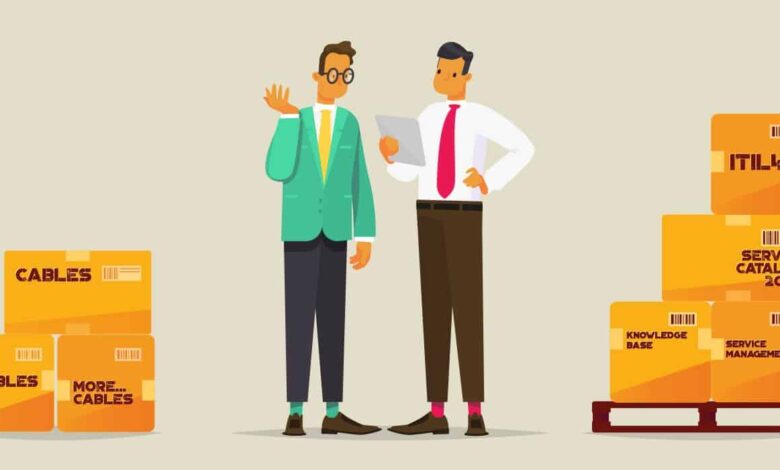When Your IT Supplier Outgrows You: A Guide to Recognizing and Responding

Understanding when your IT supplier outgrows your business is crucial for maintaining a competitive edge. This mismatch often leads to challenges, including reduced attention, increased costs, and a decline in service quality, impacting your operations and growth. As businesses evolve, their IT needs become more complex, requiring suppliers to adapt accordingly. When this adaptation fails to happen, the relationship can become strained.
This guide aims to help businesses identify and respond effectively to such scenarios. Recognizing the signs early can prevent significant disruptions and ensure your IT needs align with your supplier’s capabilities and focus. Keeping up with these changes is not just about managing IT services, but also about ensuring that your business remains technologically relevant and competitive.
Signs of Outgrowth

Common signs that your IT supplier may be outgrowing your business include delayed responses, increased pricing, and a lack of personalized service. If your requests no longer receive prompt attention, or if the solutions provided feel generic rather than tailored to your specific needs, these could be red flags. Additionally, if you notice a shift in their client focus, targeting larger clients and industries different from your own, it could indicate that your business is no longer a priority.
This shift often leads to a misalignment in service delivery, where your business might not be getting the cutting-edge solutions or dedicated support it needs. Monitoring these signs is crucial for timely recognition and action.
Impact on Your Business

An outgrown IT supplier can significantly hinder your company’s growth and operations. You might face inefficient IT support, leading to prolonged downtimes and reduced productivity. Such misalignment can result in your business missing out on technological advancements and innovative solutions that are more aligned with your evolving needs.
Additionally, it can create a gap in understanding your industry-specific challenges, resulting in less effective IT strategies. This can lead to a competitive disadvantage, as IT plays a pivotal role in modern business operations. Recognizing and addressing these impacts early can prevent long-term negative effects on your business’s growth trajectory.
Evaluating Your Current Needs
Regularly assessing your current IT requirements is important to stay aligned with your business goals. This assessment should include not only your immediate technological needs but also consider your future growth and potential market changes. Understanding your needs helps in recognizing when your supplier no longer meets them and might be focusing on clients with different requirements.
This evaluation involves analyzing the quality of current IT support, the relevance of the technologies used, and the supplier’s responsiveness to your changing needs. It also includes forecasting future IT demands and determining if your current supplier can scale their services accordingly.
Researching Alternative Suppliers

When your current IT supplier no longer fits your needs, researching alternative IT suppliers becomes crucial. Look for suppliers with a good reputation, scalability options, and positive customer reviews. Evaluate their expertise in your specific industry and their ability to provide tailored solutions.
These criteria ensure that the new supplier can meet your evolving needs effectively. Also, consider the technological advancements they offer and their approach to customer service. It’s vital to choose a supplier that not only understands your current requirements but also has the vision and capability to support your business as it grows.
Communication with Your Supplier
Maintaining open and honest communication with your IT supplier is essential. When expressing concerns, be clear and detailed about how their service changes are affecting your business. This dialogue can lead to mutual understanding and possibly a solution that benefits both parties. It’s important to approach this conversation with a collaborative mindset, aiming to find a middle ground where your needs and your supplier’s capabilities align.
Regular communication also helps in keeping track of evolving services, and ensuring that all stakeholders are aware of and prepared for the changes. A smooth transition requires detailed planning, including setting clear timelines and defining roles and responsibilities for both your team and the new supplier. It’s also crucial to ensure that your data remains secure during the transition and that there’s minimal impact on your daily operations.
Communication with Your Supplier

Open and honest communication with your IT supplier is vital. Express your concerns clearly and listen to their perspective. This dialogue can reveal whether the issues are temporary or indicative of a long-term problem. Effective communication can lead to mutual understanding and even prompt your supplier to adjust their services to better suit your needs.
Negotiating Solutions
If you believe the relationship can still be salvaged, negotiate solutions with your IT supplier. This could involve revising your contract or service level agreements to better align with your current needs. Be clear about your expectations and be open to their suggestions as well. Successful negotiation can enhance your partnership and ensure it continues to be beneficial for both parties.
Exploring Upgrades
Before parting ways with your current IT supplier, consider the possibility of upgrading your services with them. This might involve implementing more advanced technology or expanding the scope of services. However, weigh the benefits against potential drawbacks like additional costs and the risk of complicating your IT environment. An upgrade could be a solution if it aligns with your evolving business needs.
Transition Plan
If switching suppliers becomes necessary, create a detailed transition plan. This should include steps for data migration, minimizing downtime during the switch, and ensuring your new supplier understands your specific IT needs. A well-thought-out plan is crucial for a smooth transition and maintaining business continuity.
Legal and Contractual Aspects
Review your current contract and legal obligations before ending a relationship with an IT supplier. Understand the terms for contract termination or amendment. This will help you navigate the legal aspects of the transition and avoid potential disputes. Ensure that you’re compliant with all contractual requirements to prevent legal complications.
Onboarding a New IT Supplier

Onboarding a new IT supplier involves several steps. Start by thoroughly vetting potential suppliers, considering factors like expertise, scalability, and customer service. Once you’ve selected a new supplier, work closely with them to ensure they understand your business’s IT needs. A seamless onboarding process is key to establishing a successful new partnership.
Monitoring and Feedback
Continuous monitoring of your new IT supplier’s performance is crucial. Regularly assess whether they are meeting your expectations and needs. Providing feedback is also important for maintaining a healthy relationship. Constructive feedback can guide your supplier in fine-tuning their services, ensuring a successful long-term partnership.
By following these guidelines, you can effectively manage the situation if your IT supplier outgrows your business, ensuring that your IT needs continue to be met in a way that supports your company’s growth and success.
